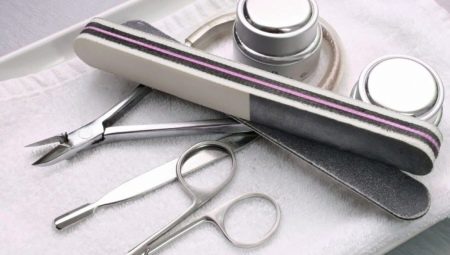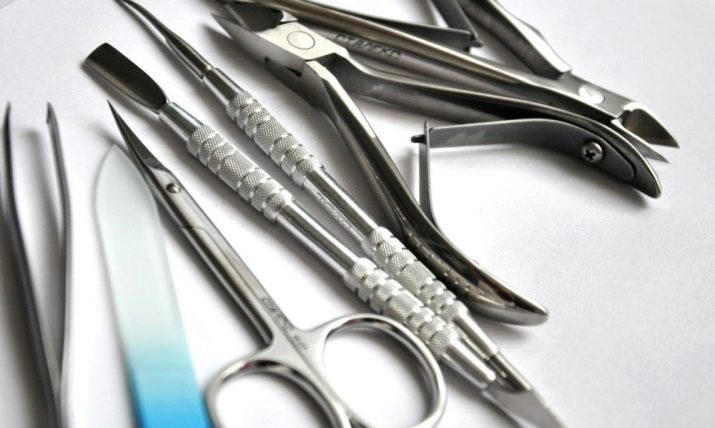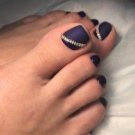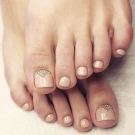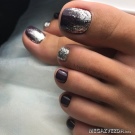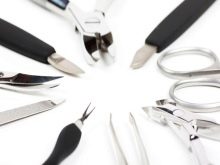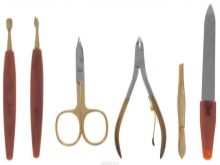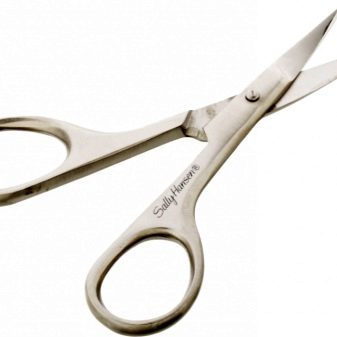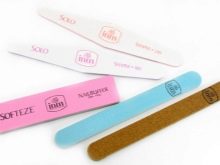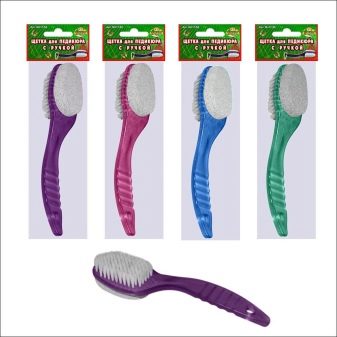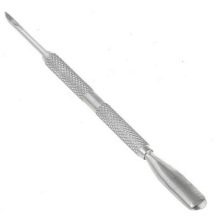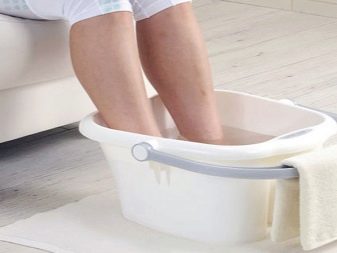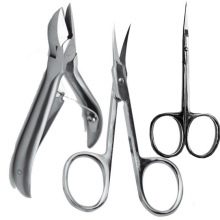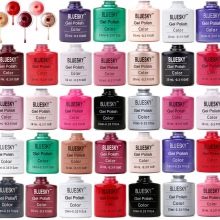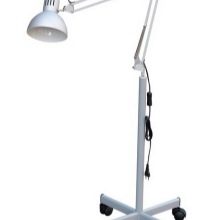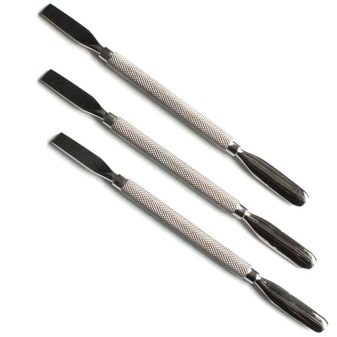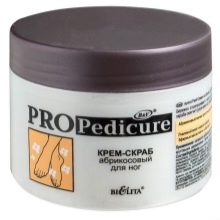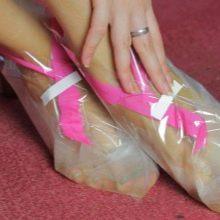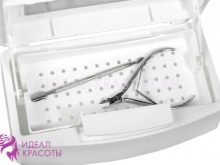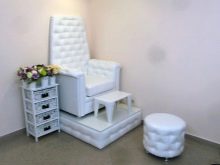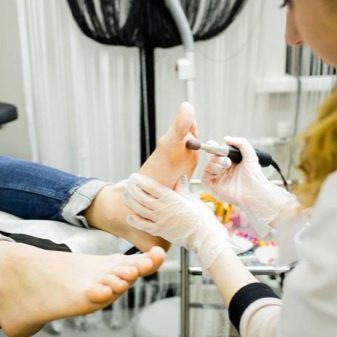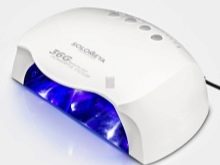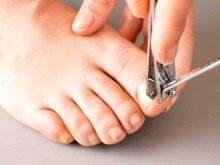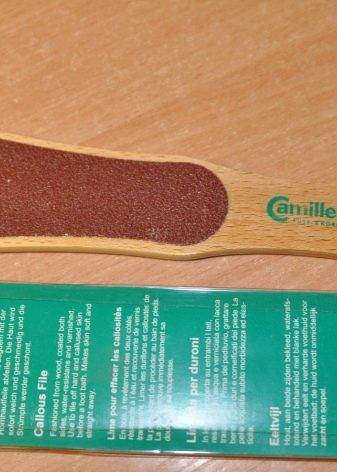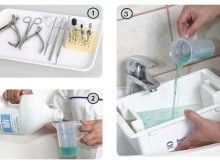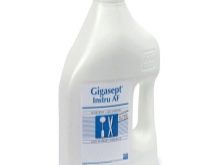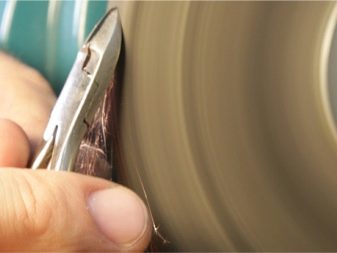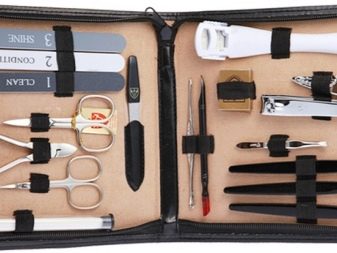With the onset of the summer season, any woman of fashion gets an arsenal of sandals and shoes of different colors and designs. All of them share one feature - they can see the heels and toes, and therefore care should be taken for them to be more thorough. A pedicure will help correct small flaws and emphasize the merits of beautiful feet, and multi-colored lacquer will emphasize style and originality. To skin and nail care was comfortable not only in the salon, but also at home, you must make sure that you have all the necessary tools and devices.
What is needed?
In professional stores you can find a huge number of different files, scrapers, tweezers or scissors. They may differ in material, shape and size, and all of them may be needed for quality service. Of course, for home use such a large number of devices, often practically no different from each other, there is no need to purchase. But do a couple of tools also fail. It is necessary to be prepared in advance to spend a tidy sum for the purchase of all that may be required even for the simplest treatment of the nail.
At the same time, it is better to immediately purchase quality products from a trusted manufacturer, since not only beauty but also health of the legs depends on it.
Professional and ordinary tools
There are some differences in both appearance and cost, and in the functionality of ordinary and professional tools for a pedicure. Most often, home products are less durable, as they do not have to work with such frequency. Because of this, their cost is significantly lower. In addition, not every instrument from the salon is required for simple home care. The minimum set for individual use in home care includes the following tools.
- Nail scissors and cuticles. Thin nails are best cut with a small nail scissors, which, if necessary, can also be used to trim the cuticle. They can be with a long or short tip, have a thinner or wider handle. It is impossible to predict which form will suit a particular girl, but when choosing, it is necessary to focus on how such scissors fit into a hand. Fingers should be free to enter the rings, the nail should not be too tight, but too free play will interfere with work.
- Triangular nippers. This tool is more convenient than scissors, cut the cuticle and burrs due to the special shape of the blades. They fit snugly around the edge and do not leave torn edges.
It is best not to use such a device for nail clipping, as it quickly becomes blunt, the next product would be better for this.
- Nail forceps. The nail plate on the toes is thicker and stronger than on the hands, so it is quite difficult to cut it off with ordinary scissors. Come to the aid of small tweezers, which are easy to cut off the nail in one click on the handle.
- Nailfile. The ideal option would be to purchase a whole set, which will include several tools of different sizes and abrasive.This is necessary in order not only to file the edge of the cut nail, but also to bring it to a certain shape and make it smooth. The fine-grained nail file can polish the surface of the nail plate before applying the gel or varnish.
- File or skin grater. Graters for the skin will also have to be purchased in the kit, since different skin areas will require different stiffness. More rigid graters remove the upper coarsened layer of skin from the heel, various corns and natoptysh. A softer nail file will help to treat the skin around the nail and on softer areas of the foot.
- Recent years have become increasingly popular. laser multi graters. They are made of stainless steel, so they can be used with both dry and wet pedicure. The tool got its name due to small teeth on the working surface, which removes the dead layer of cells. Such small notches are applied to the metal with special laser equipment.
- Brush. For extremely sensitive and dry skin, a simple brush with short and stiff bristles can perfectly replace the grater. Also, this tool perfectly cleans the surface under the nail, where in the summer season road dust constantly falls.
- Scraper. The overdried and rough skin does not give in even to the file of the lowest abrasivity. In such cases, there is nothing left but to cut off these dead spots. In order not to cut and injure living tissue, a special scraper was developed. In it, the sharp blade is hidden in a neat nozzle that regulates the thickness of the layer being cut and does not allow an inexperienced person to hurt himself. Usually, it is necessary to cut off the skin only if the skin has been deprived of even minimal care for a long time, so the tool is not very useful. But in some cases do without it still does not work.
- Pusher This tool gets its name from the English “push” - push. It is designed to push back the cuticle, which has grown on the nail plate. It is best to acquire double-sided pusher, at the second end of which there is a small clove. With this clove, it is convenient to brush off excess pterygium from the nail (a thin, almost transparent layer of skin near the nail bed), without injuring the nail plate itself with a sharp blade.
For those who do not like to move the cuticle with a metal spatula, ordinary wooden sticks, which are usually made from orange wood, are perfect.
These products will be enough to make the easiest manicure yourself. It should be borne in mind that you first need to soak your feet in warm water (this can be done in an ordinary wash basin), wipe off with a towel and remove debris or sawed nail particles with wet napkins or cotton pads.
However, such items are in the house of every girl, so they can not be purchased specifically for a pedicure.
A complete list of all professional tools and devices for skin care and toenails has, perhaps, more than a hundred positions. The description of each of them will take more than one page. All of them can be grouped by specific characteristics and be divided into the following subgroups.
- Tools and tools for working with the nail. These are various scissors with straight and curved blades, nippers, files and tongs of various shapes and sizes, made of different materials. This also includes all the tools and all the equipment for applying a cover and decorative coating on the nail plate. These are various varnishes and gels, rhinestones, tools for painting and printing on nails. Special UV lamps that allow gel polish to harden on the nails. In good salons special floor lamps are used, larger than table lamps for the convenience of clients. Special tools for decorating nails, such as brushes, dots and fimo.
- Tools and tools for working with the cuticle. This subgroup includes both ordinary nail scissors and nippers that can be used for the nail itself, as well as specialized paddles, pushers, wooden sticks and cutters. To this subgroup can be attributed special means to soften and remove the cuticle. The means that actually dissolve this thin film of skin on the nail are called “remurers”.
- Tools and tools for skin care. This includes various nail files and graters, brushes with coarse bristles and pumice. A wide range of different scrapers and blades for dealing with hardened areas, remurers for corns and corns. A very interesting device for the salon pedicure - special socks, impregnated with special chemical compounds. They are put on for a certain time, after which the top layer of dead cells crawls off the foot like snake skin.
Various scrubs, creams, milk, oils and mousses for softening, nourishing, exfoliating and moisturizing the skin of the feet can be attributed to this subgroup.
- Auxiliary equipment and accessories. This group includes special trays for a pedicure, chairs and coasters. Containers for storing and disinfecting tools, special hoods and vacuum cleaners designed to rid the skin and the surrounding area of nail dust. These are various consumables in the form of disposable slippers, various capes, dry and wet wipes, gloves for the master, socks for the client. Special loops can be attributed to this subgroup, which greatly facilitate the work of a professional and allow you to see and eliminate a greater number of nail and skin defects or to make a very thin pattern even on the smallest nail.
Of course, this amount of equipment can not fit in a small bedside table or in a closet, standing in the bathroom. When the simplest basic tools are mastered, it will be possible to select and purchase precisely those of them, without which a particular girl at home cannot do.
Universal
In addition to professional and home tools for pedicure, there are those that can be used both in the salon and individually. Most often these are some kind of sets and special cars. For example, one of the most popular devices for processing skin and nail, both in the salon and in home care, is a small grinder with several cutters. The only difference between a professional tool and an ordinary one is its power and variety of attachments.
Ready-made kits for foot care from eminent manufacturers can be purchased for home use, while the master in the salon can serve the client, taking exactly such tools from the box. Ultraviolet and LED lamps, various hydromassage baths and beauty care products are also considered universal means and equipment.
In addition, most of the auxiliary tools, such as finger spacers and consumables, also cannot be divided into professional and conventional.
How to choose high-quality devices?
Those who first acquire tools for nail and skin care will have to choose very carefully a reliable manufacturer and quality products. Pay attention to the following points when choosing.
- Good tool easy to use. It fits perfectly in your hand, does not slip and does not require great force when pressed.
- Sharpening any cutting edges should be such that they do not tear, but cut the skin.
- High-quality scraper blades or special razors do not close the cut area and move smoothly and smoothly.
- The material must be hard and anti-corrosion, as a pedicure involves frequent contact with warm water.
- The thicker the toenails, the larger the size of the forceps should be.
- If possible, it is better to choose several varieties of one tool in order to find out which of them is more convenient and of higher quality during the procedure.
- Not every expensive product is of high quality, but good tools can not be too cheap.
You should not get very upset if the first selected tool does not turn out to be perfect, experience comes with time. However, there are several manufacturers, for whose products reviews for many years remain mostly high, both from professionals and from ordinary users. For example, one of the oldest and famous German firms Zinger or more modern Camillen 60.
Terms of use
There are many manuals and examples of the use of this or that tool in the network, and some packages even have a small instruction manual. Since each device is designed for a specific purpose, the instructions for their use will vary significantly. There are some general rules that are best followed.
- The grinder handles only dry skin. If to impose a mill on a wet site, then it or it will be scrolled on it "empty", or the gentle steamed skin will damage.
- It is strictly forbidden to take with wet hands those devices that are connected to the mains. In addition, it is desirable to remove the basins and baths with water away from such devices.
- Apparatus pedicure is not done on feet that have a rash, inflammation or sores. It is necessary to solve the problems with the health of the foot, and then go on to restore beauty. Trimming and the easiest home manicure can be done, but it is better to wait for the healing of all areas. The same rule applies in case of an ingrown or damaged nail. This is the primary problem, and the pedicure can be postponed.
- All tools must be in good condition, they must be clean and sharp. After each procedure performed at home, all equipment must be thoroughly washed with soap and dried.
A cropped manicure with blunt blades will result in a lot of burrs and microlocks.
Disinfection and sterilization
If personal tools simply wash with soapy water after use, then the salon tools require more thorough disinfection. This is due to the fact that in the salon with the same scissors or nippers they process the nails of different people. For those who want a more thorough care of their home arsenal, you can easily take an example from the salons.
Disinfection can be performed using special solutions: "Mikospor", "Gigasept" and other similar. To do this, lower the instruments into the container filled with the solution and keep them in it with the time indicated on the packaging of the disinfector. Another excellent tool that can be used to process personal tools is ordinary alcohol or hydrogen peroxide.
Sterilization in the salons is carried out in special equipment under high temperatures. To acquire such expensive and massive equipment home is impractical. The usual foil and oven can come to the rescue. Clean dry tools are laid out on the foil in such a way as not to touch each other, and put in an oven heated to 200 degrees for 15 minutes.
It is important to understand that those tools whose handles are made of plastic or rubber cannot be sterilized in this way, otherwise the material will melt.
Storage rules
Even the best tools in case of improper use or storage quickly become useless. To avoid this, it is necessary to take for them a special drawer of the bedside table or a deep box. It is good if each tool will lie in a separate compartment or will be attracted to the side of the box with a small rubber band. Such organizers can be easily made independently or by examples from the Internet.Of course, you should not drop and throw your tools, use them for other purposes and leave them in water for a long time.
It is advisable to regularly check the sharpness of all cutting edges and sharpen them in a timely manner. If there is no experience of self-sharpening, then it is better to give a pedicure tool to a specialist. Spring products (tongs or nippers) should always be kept unclamped so as not to stretch the spring.
Careful treatment of the instrument, proper disinfection and sharpening - this is already half of the high-quality home procedure. A skill will come through a couple of procedures, you just have to be patient and do not give up trying.
About what tools you need for a classic pedicure, see the following video.
